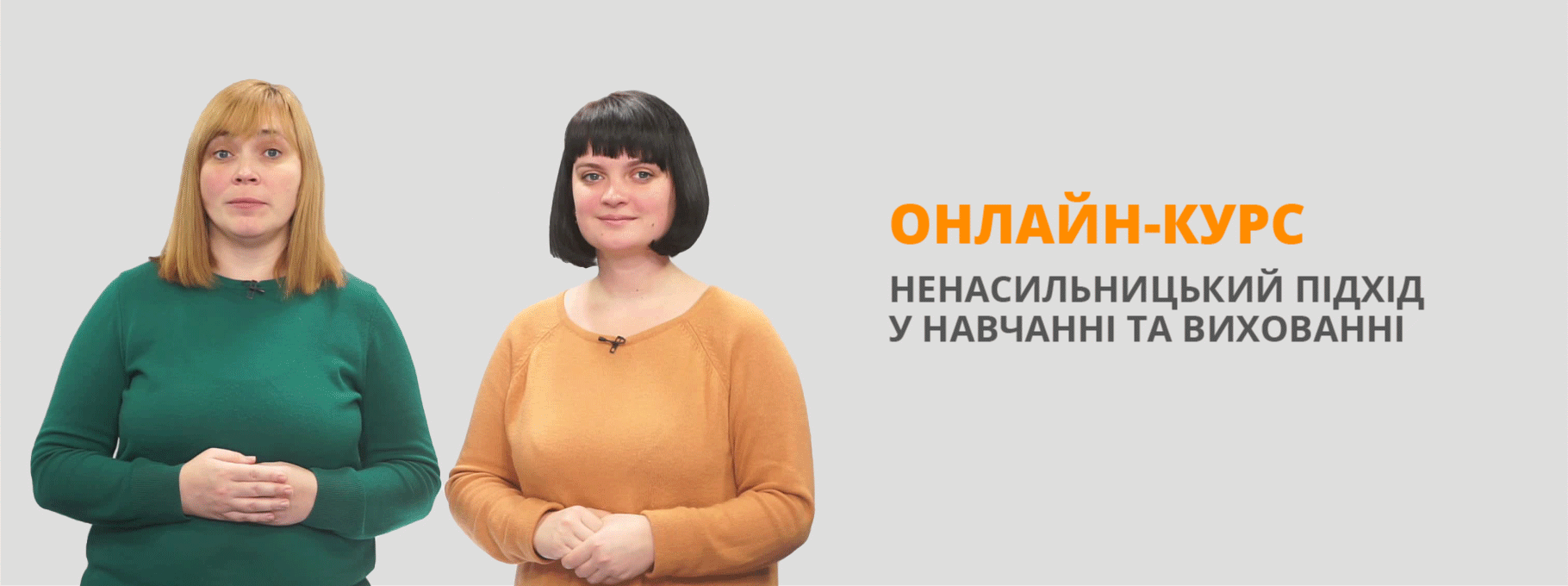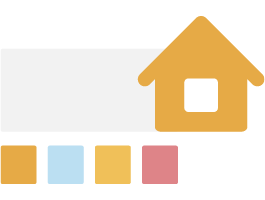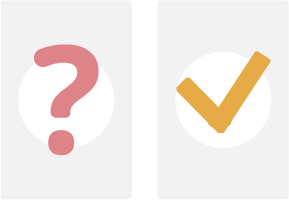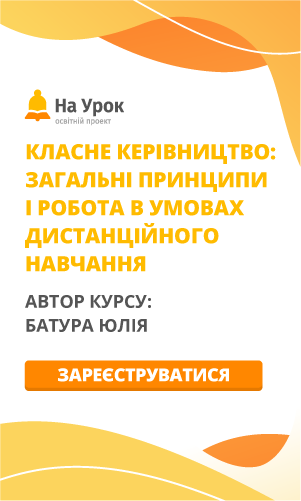Reading Comprehension 10
Task 1. Complete the sentences with the words.
1. It doesn't rain for a long time and rivers dry up. It's ....
Task 1. Complete the sentences with the words.
2. ....is a large sea wave caused by an underwater earthquake or volcanic explosion.
Task 1. Complete the sentences with the words.
3.It was ground's vibrating and wall shaking. It was.....
Task 1. Complete the sentences with the words.
4. ...is a body of water that covers normally dry land.
Task 1. Complete the sentences with the words.
5.Lava, dust ans gases erupt from beneath the earth. It's....
Task 1. Complete the sentences with the words.
6.... is a very strong spinning wind.
Task 2. Read the text "Natural Disasters" and do the tasks
Natural disasters take many different forms and can happen without warning. Earthquakes, floods, volcanoes, drought, typhoons and hurricanes are all natural disasters. The earthquake of 26 December 2004 resulted in one of the worst natural disasters in living memory. It was a massive underwater quake and occurred in the Indian Ocean. This caused a huge tidal wave (a tsunami) to cross the Indian Ocean. It destroyed coastlines and communities and brought death and destruction to many people. Thousands of people were killed as the wave travelled miles across the ocean to distant beaches. Whole families were swept out to sea or drowned as the sea invaded the land. The survivors need fresh water, food and shelter as well as medical help.
Volcanoes happen where the earth's crust is thin — lava, dust and gases burst out (erupt) from beneath the earth. They can rise into a massive cone shape — like a mountain — and erupt or they can be so violent that they just explode directly from the earth with no warning. There are 1,511 active volcanoes in the world. This means that they may still be dangerous. In 1985 the massive Colombian volcano Nevado del Ruiz erupted. The lava melted a glacier and sent tons of mud down the town of Armero below. Nearly twenty thousand people died then.
Hurricanes are extremely strong storms arid often happen in the Caribbean. They cause high winds, huge waves and heavy flooding and can be hundreds of miles across. In 1998 Hurricane Gilbert produced 160 mile an hour winds. It killed 318 people and destroyed much of Jamaica. Tornadoes or twisters are very strong spinning winds. They can move objects as big as a car and can blow buildings down. These are very common in West Africa and certain areas of the USA. Another kind of natural disaster is a drought. This happens when there is no water — when it doesn't rain for a long time and rivers dry up. Plants, animals and even humans die as a result of drought, for we all need water to live. This causes crops to fail, animals to die and sadly, people to starve.
Floods happen in many countries after very heavy rainfall. When rain pours for weeks at a time, rivers overflow and people and property can be trapped or simply washed away. Since 1998 more than 30 people have drowned in floods in Britain. Flooding in Bangladesh caused 1,300 deaths in 1989.
According to the text:
1.The earthquake of 2004 caused a huge tidal wave.
Task 2. Read the text "Natural Disasters" and do the tasks
Natural disasters take many different forms and can happen without warning. Earthquakes, floods, volcanoes, drought, typhoons and hurricanes are all natural disasters. The earthquake of 26 December 2004 resulted in one of the worst natural disasters in living memory. It was a massive underwater quake and occurred in the Indian Ocean. This caused a huge tidal wave (a tsunami) to cross the Indian Ocean. It destroyed coastlines and communities and brought death and destruction to many people. Thousands of people were killed as the wave travelled miles across the ocean to distant beaches. Whole families were swept out to sea or drowned as the sea invaded the land. The survivors need fresh water, food and shelter as well as medical help.
Volcanoes happen where the earth's crust is thin — lava, dust and gases burst out (erupt) from beneath the earth. They can rise into a massive cone shape — like a mountain — and erupt or they can be so violent that they just explode directly from the earth with no warning. There are 1,511 active volcanoes in the world. This means that they may still be dangerous. In 1985 the massive Colombian volcano Nevado del Ruiz erupted. The lava melted a glacier and sent tons of mud down the town of Armero below. Nearly twenty thousand people died then.
Hurricanes are extremely strong storms arid often happen in the Caribbean. They cause high winds, huge waves and heavy flooding and can be hundreds of miles across. In 1998 Hurricane Gilbert produced 160 mile an hour winds. It killed 318 people and destroyed much of Jamaica. Tornadoes or twisters are very strong spinning winds. They can move objects as big as a car and can blow buildings down. These are very common in West Africa and certain areas of the USA. Another kind of natural disaster is a drought. This happens when there is no water — when it doesn't rain for a long time and rivers dry up. Plants, animals and even humans die as a result of drought, for we all need water to live. This causes crops to fail, animals to die and sadly, people to starve.
Floods happen in many countries after very heavy rainfall. When rain pours for weeks at a time, rivers overflow and people and property can be trapped or simply washed away. Since 1998 more than 30 people have drowned in floods in Britain. Flooding in Bangladesh caused 1,300 deaths in 1989.
2. Thousands of people were drowned in the sea.
Task 2. Read the text "Natural Disasters" and do the tasks
Natural disasters take many different forms and can happen without warning. Earthquakes, floods, volcanoes, drought, typhoons and hurricanes are all natural disasters. The earthquake of 26 December 2004 resulted in one of the worst natural disasters in living memory. It was a massive underwater quake and occurred in the Indian Ocean.
Volcanoes happen where the earth's crust is thin — lava, dust and gases burst out (erupt) from beneath the earth. They can rise into a massive cone shape — like a mountain — and erupt or they can be so violent that they just explode directly from the earth with no warning. There are 1,511 active volcanoes in the world. This means that they may still be dangerous. In 1985 the massive Colombian volcano Nevado del Ruiz erupted. The lava melted a glacier and sent tons of mud down the town of Armero below. Nearly twenty thousand people died then.
Hurricanes are extremely strong storms arid often happen in the Caribbean. They cause high winds, huge waves and heavy flooding and can be hundreds of miles across. In 1998 Hurricane Gilbert produced 160 mile an hour winds. It killed 318 people and destroyed much of Jamaica. Tornadoes or twisters are very strong spinning winds. They can move objects as big as a car and can blow buildings down. These are very common in West Africa and certain areas of the USA. Another kind of natural disaster is a drought. This happens when there is no water — when it doesn't rain for a long time and rivers dry up. Plants, animals and even humans die as a result of drought, for we all need water to live. This causes crops to fail, animals to die and sadly, people to starve.
Floods happen in many countries after very heavy rainfall. When rain pours for weeks at a time, rivers overflow and people and property can be trapped or simply washed away. Since 1998 more than 30 people have drowned in floods in Britain. Flooding in Bangladesh caused 1,300 deaths in 1989.
3.Volcanoes happen where the earth's crust is thick.
Task 2. Read the text "Natural Disasters" and do the tasks
Natural disasters take many different forms and can happen without warning. Earthquakes, floods, volcanoes, drought, typhoons and hurricanes are all natural disasters. The earthquake of 26 December 2004 resulted in one of the worst natural disasters in living memory. It was a massive underwater quake and occurred in the Indian Ocean.
Volcanoes happen where the earth's crust is thin — lava, dust and gases burst out (erupt) from beneath the earth. They can rise into a massive cone shape — like a mountain — and erupt or they can be so violent that they just explode directly from the earth with no warning. There are 1,511 active volcanoes in the world. This means that they may still be dangerous. In 1985 the massive Colombian volcano Nevado del Ruiz erupted.
Hurricanes are extremely strong storms arid often happen in the Caribbean. They cause high winds, huge waves and heavy flooding and can be hundreds of miles across. In 1998 Hurricane Gilbert produced 160 mile an hour winds. It killed 318 people and destroyed much of Jamaica. Tornadoes or twisters are very strong spinning winds. They can move objects as big as a car and can blow buildings down. These are very common in West Africa and certain areas of the USA. Another kind of natural disaster is a drought. This happens when there is no water — when it doesn't rain for a long time and rivers dry up. Plants, animals and even humans die as a result of drought, for we all need water to live. This causes crops to fail, animals to die and sadly, people to starve.
Floods happen in many countries after very heavy rainfall. When rain pours for weeks at a time, rivers overflow and people and property can be trapped or simply washed away. Since 1998 more than 30 people have drowned in floods in Britain. Flooding in Bangladesh caused 1,300 deaths in 1989.
4. Hurricanes happen in West Africa.
Task 2. Read the text "Natural Disasters" and do the tasks
Natural disasters take many different forms and can happen without warning. Earthquakes, floods, volcanoes, drought, typhoons and hurricanes are all natural disasters. The earthquake of 26 December 2004 resulted in one of the worst natural disasters in living memory. It was a massive underwater quake and occurred in the Indian Ocean.
Volcanoes happen where the earth's crust is thin — lava, dust and gases burst out (erupt) from beneath the earth. They can rise into a massive cone shape — like a mountain — and erupt or they can be so violent that they just explode directly from the earth with no warning. There are 1,511 active volcanoes in the world. This means that they may still be dangerous. In 1985 the massive Colombian volcano Nevado del Ruiz erupted.
Hurricanes are extremely strong storms arid often happen in the Caribbean. They cause high winds, huge waves and heavy flooding and can be hundreds of miles across. In 1998 Hurricane Gilbert produced 160 mile an hour winds. It killed 318 people and destroyed much of Jamaica. Tornadoes or twisters are very strong spinning winds. They can move objects as big as a car and can blow buildings down. These are very common in West Africa and certain areas of the USA. Another kind of natural disaster is a drought. This happens when there is no water — when it doesn't rain for a long time and rivers dry up. Plants, animals and even humans die as a result of drought, for we all need water to live. This causes crops to fail, animals to die and sadly, people to starve.
Floods happen in many countries after very heavy rainfall. When rain pours for weeks at a time, rivers overflow and people and property can be trapped or simply washed away. Since 1998 more than 30 people have drowned in floods in Britain. Flooding in Bangladesh caused 1,300 deaths in 1989.
5.Plants, animals and humans die as a result of drought.
Task 2. Read the text "Natural Disasters" and do the tasks
Natural disasters take many different forms and can happen without warning. Earthquakes, floods, volcanoes, drought, typhoons and hurricanes are all natural disasters. The earthquake of 26 December 2004 resulted in one of the worst natural disasters in living memory. It was a massive underwater quake and occurred in the Indian Ocean.
Volcanoes happen where the earth's crust is thin — lava, dust and gases burst out (erupt) from beneath the earth. They can rise into a massive cone shape — like a mountain — and erupt or they can be so violent that they just explode directly from the earth with no warning. There are 1,511 active volcanoes in the world. This means that they may still be dangerous. In 1985 the massive Colombian volcano Nevado del Ruiz erupted.
Hurricanes are extremely strong storms arid often happen in the Caribbean. They cause high winds, huge waves and heavy flooding and can be hundreds of miles across. In 1998 Hurricane Gilbert produced 160 mile an hour winds. It killed 318 people and destroyed much of Jamaica. Tornadoes or twisters are very strong spinning winds. They can move objects as big as a car and can blow buildings down. These are very common in West Africa and certain areas of the USA. Another kind of natural disaster is a drought. This happens when there is no water — when it doesn't rain for a long time and rivers dry up. Plants, animals and even humans die as a result of drought, for we all need water to live. This causes crops to fail, animals to die and sadly, people to starve.
Floods happen in many countries after very heavy rainfall. When rain pours for weeks at a time, rivers overflow and people and property can be trapped or simply washed away. Since 1998 more than 30 people have drowned in floods in Britain. Flooding in Bangladesh caused 1,300 deaths in 1989.
6.People always know when natural disasters can happen.
Monkey madness
A movie filmed by monkeys is to be shown on the BBC. The primates were given monkey- proof cameras. At the same time, they were also given a touchscreen monitor so they could select different types of videos to watch. It seems that they were more interested in making films than watching them. The monkey- made movies probably won't win any Oscars, but researchers hope it will show what sort of things monkeys like to look at.
What is the BBC going to show?
The Seven Wonders of the World
The Hanging Gardens of Babylon were built around 600 BC by King Nebuchadnezzar II for his sick wife, Amytis. The gardens had many plants from her homeland, Persia. The large gardens were remarkable because they were built on stone terraces which were watered by a series of complicated pumps.
Why were the Hanging Gardens of Babylon so famous? (paragraph 2)
The Seven Wonders of the World
Many of the Seven Wonders were destroyed by earthquakes. This includes the Statue of Zeus at Olympia, which has been one of the most popular tourist sights for 600 years after it was built in 430 BC. The Lighthouse of Alexandria goes one better and was destroyed by two earthquakes in the 1300s - one after the other. It was built on the island of Pharos, off the coast of Egypt. During the day, a mirror was used at the top of the 130-metre-tall tower to help sailors find their way, while at night, a fire was lit.
Why did more people see the Statue of Zeus than the Lighthouse of Alexandria? (paragraph 3)
Checkmate
People have been playing chess for hundreds of years. A game similar to chess was first played in Northern India in the 6th century. The popularity of the game spread to Persia and the Muslim world during the 10th century and by the 12th century the game had reached Southern Europe. Italian and Spanish players changed the pieces and rules during the 15th century to what they are today. It was another 400 years later, in 1886, that the world had its first chess champion - a man from Prague named Wilhelm Steinitz.
When did modern chess originate?
Happy birthday to you...
The best known song in English isn't by The Beatles or The Rolling Stones but is Happy Birthday to You. The song was originally written by the Hill sisters in 1893 but with different words -Good morning to all. During the early 20th century, people started singing 'Happy birthday to you...". In 1935 the song was copyrighted by authors Orem and Forem, who wanted to make money. The song still earns 5 million dollars a year from films and music, including the most
famous version sung by Marilyn Monroe to president John F. Kennedy.
Who wrote the words "Happy birthday to you..." in the song?
Read the advice to competitors in a race. Match questions A–F with paragraphs 1–5. There is one extra question.
How to achieve success at the Marathon des Sables
The best – and probably only – way of completing this six-day ultramarathon in southern Morocco is to make efficient preparations. Here are some tips to help you survive the 251 km course.
1 ___
As a competitor in the Marathon des Sables, you’ll be responsible for your own food. To maintain physical strength, you’ll need between 3,000 and 4,000 calories per day. Dried food is best because of its low weight and volume. Plan for a solid breakfast before the race, and a large evening meal afterwards. Take dried fruit and nuts, and high energy bars as snacks.
2 ___
During the race, you’ll need to drink between six and seven litres of water per day. Water is distributed in the morning, at control posts during the race and on completion of each stage – remember to save some each evening to prepare breakfast the next day. You mustn’t discard water bottles in the desert; they should be exchanged for new ones or thrown away at the control posts.
3 ___
You’ll need a comfortable rucksack that doesn’t cover the competitor number on your chest; if it does, you may not be allowed to compete. The bag should contain everything you need, including food, a stove for heating water, a sleeping bag and your clothes. Everything you carry must be weighed so that your rucksack isn’t too heavy for you.
4 ___
You should start preparing at least six months before the event starts. Aim to run 150 to 190 miles a week, increasing the distance as time goes on. Train with a rucksack occasionally and get used to drinking water on long runs. You can also use the practice runs to test different energy foods. If you aren’t used to running, you should not enter the competition.
5 ___
Special satellite facilities are arranged during the race so that you can call friends and family. Phone calls cost around €3 per minute, so bring cash or a credit card with you. You can send one free email per day and the rest you will be charged for. If you want to receive internet messages, the sender will need your full name and competitor number.
Read the advice to competitors in a race. Match questions A–F with paragraphs 1–5. There is one extra question.
How to achieve success at the Marathon des Sables
The best – and probably only – way of completing this six-day ultramarathon in southern Morocco is to make efficient preparations. Here are some tips to help you survive the 251 km course.
1 ___
As a competitor in the Marathon des Sables, you’ll be responsible for your own food. To maintain physical strength, you’ll need between 3,000 and 4,000 calories per day. Dried food is best because of its low weight and volume. Plan for a solid breakfast before the race, and a large evening meal afterwards. Take dried fruit and nuts, and high energy bars as snacks.
2 ___
During the race, you’ll need to drink between six and seven litres of water per day. Water is distributed in the morning, at control posts during the race and on completion of each stage – remember to save some each evening to prepare breakfast the next day. You mustn’t discard water bottles in the desert; they should be exchanged for new ones or thrown away at the control posts.
3 ___
You’ll need a comfortable rucksack that doesn’t cover the competitor number on your chest; if it does, you may not be allowed to compete. The bag should contain everything you need, including food, a stove for heating water, a sleeping bag and your clothes. Everything you carry must be weighed so that your rucksack isn’t too heavy for you.
4 ___
You should start preparing at least six months before the event starts. Aim to run 150 to 190 miles a week, increasing the distance as time goes on. Train with a rucksack occasionally and get used to drinking water on long runs. You can also use the practice runs to test different energy foods. If you aren’t used to running, you should not enter the competition.
5 ___
Special satellite facilities are arranged during the race so that you can call friends and family. Phone calls cost around €3 per minute, so bring cash or a credit card with you. You can send one free email per day and the rest you will be charged for. If you want to receive internet messages, the sender will need your full name and competitor number.
Read the advice to competitors in a race. Match questions A–F with paragraphs 1–5. There is one extra question.
How to achieve success at the Marathon des Sables
The best – and probably only – way of completing this six-day ultramarathon in southern Morocco is to make efficient preparations. Here are some tips to help you survive the 251 km course.
1 ___
As a competitor in the Marathon des Sables, you’ll be responsible for your own food. To maintain physical strength, you’ll need between 3,000 and 4,000 calories per day. Dried food is best because of its low weight and volume. Plan for a solid breakfast before the race, and a large evening meal afterwards. Take dried fruit and nuts, and high energy bars as snacks.
2 ___
During the race, you’ll need to drink between six and seven litres of water per day. Water is distributed in the morning, at control posts during the race and on completion of each stage – remember to save some each evening to prepare breakfast the next day. You mustn’t discard water bottles in the desert; they should be exchanged for new ones or thrown away at the control posts.
3 ___
You’ll need a comfortable rucksack that doesn’t cover the competitor number on your chest; if it does, you may not be allowed to compete. The bag should contain everything you need, including food, a stove for heating water, a sleeping bag and your clothes. Everything you carry must be weighed so that your rucksack isn’t too heavy for you.
4 ___
You should start preparing at least six months before the event starts. Aim to run 150 to 190 miles a week, increasing the distance as time goes on. Train with a rucksack occasionally and get used to drinking water on long runs. You can also use the practice runs to test different energy foods. If you aren’t used to running, you should not enter the competition.
5 ___
Special satellite facilities are arranged during the race so that you can call friends and family. Phone calls cost around €3 per minute, so bring cash or a credit card with you. You can send one free email per day and the rest you will be charged for. If you want to receive internet messages, the sender will need your full name and competitor number.
Read the advice to competitors in a race. Match questions A–F with paragraphs 1–5. There is one extra question.
How to achieve success at the Marathon des Sables
The best – and probably only – way of completing this six-day ultramarathon in southern Morocco is to make efficient preparations. Here are some tips to help you survive the 251 km course.
1 ___
As a competitor in the Marathon des Sables, you’ll be responsible for your own food. To maintain physical strength, you’ll need between 3,000 and 4,000 calories per day. Dried food is best because of its low weight and volume. Plan for a solid breakfast before the race, and a large evening meal afterwards. Take dried fruit and nuts, and high energy bars as snacks.
2 ___
During the race, you’ll need to drink between six and seven litres of water per day. Water is distributed in the morning, at control posts during the race and on completion of each stage – remember to save some each evening to prepare breakfast the next day. You mustn’t discard water bottles in the desert; they should be exchanged for new ones or thrown away at the control posts.
3 ___
You’ll need a comfortable rucksack that doesn’t cover the competitor number on your chest; if it does, you may not be allowed to compete. The bag should contain everything you need, including food, a stove for heating water, a sleeping bag and your clothes. Everything you carry must be weighed so that your rucksack isn’t too heavy for you.
4 ___
You should start preparing at least six months before the event starts. Aim to run 150 to 190 miles a week, increasing the distance as time goes on. Train with a rucksack occasionally and get used to drinking water on long runs. You can also use the practice runs to test different energy foods. If you aren’t used to running, you should not enter the competition.
5 ___
Special satellite facilities are arranged during the race so that you can call friends and family. Phone calls cost around €3 per minute, so bring cash or a credit card with you. You can send one free email per day and the rest you will be charged for. If you want to receive internet messages, the sender will need your full name and competitor number.
Read the advice to competitors in a race. Match questions A–F with paragraphs 1–5. There is one extra question.
How to achieve success at the Marathon des Sables
The best – and probably only – way of completing this six-day ultramarathon in southern Morocco is to make efficient preparations. Here are some tips to help you survive the 251 km course.
1 ___
As a competitor in the Marathon des Sables, you’ll be responsible for your own food. To maintain physical strength, you’ll need between 3,000 and 4,000 calories per day. Dried food is best because of its low weight and volume. Plan for a solid breakfast before the race, and a large evening meal afterwards. Take dried fruit and nuts, and high energy bars as snacks.
2 ___
During the race, you’ll need to drink between six and seven litres of water per day. Water is distributed in the morning, at control posts during the race and on completion of each stage – remember to save some each evening to prepare breakfast the next day. You mustn’t discard water bottles in the desert; they should be exchanged for new ones or thrown away at the control posts.
3 ___
You’ll need a comfortable rucksack that doesn’t cover the competitor number on your chest; if it does, you may not be allowed to compete. The bag should contain everything you need, including food, a stove for heating water, a sleeping bag and your clothes. Everything you carry must be weighed so that your rucksack isn’t too heavy for you.
4 ___
You should start preparing at least six months before the event starts. Aim to run 150 to 190 miles a week, increasing the distance as time goes on. Train with a rucksack occasionally and get used to drinking water on long runs. You can also use the practice runs to test different energy foods. If you aren’t used to running, you should not enter the competition.
5 ___
Special satellite facilities are arranged during the race so that you can call friends and family. Phone calls cost around €3 per minute, so bring cash or a credit card with you. You can send one free email per day and the rest you will be charged for. If you want to receive internet messages, the sender will need your full name and competitor number.

Створюйте онлайн-тести
для контролю знань і залучення учнів
до активної роботи у класі та вдома


















